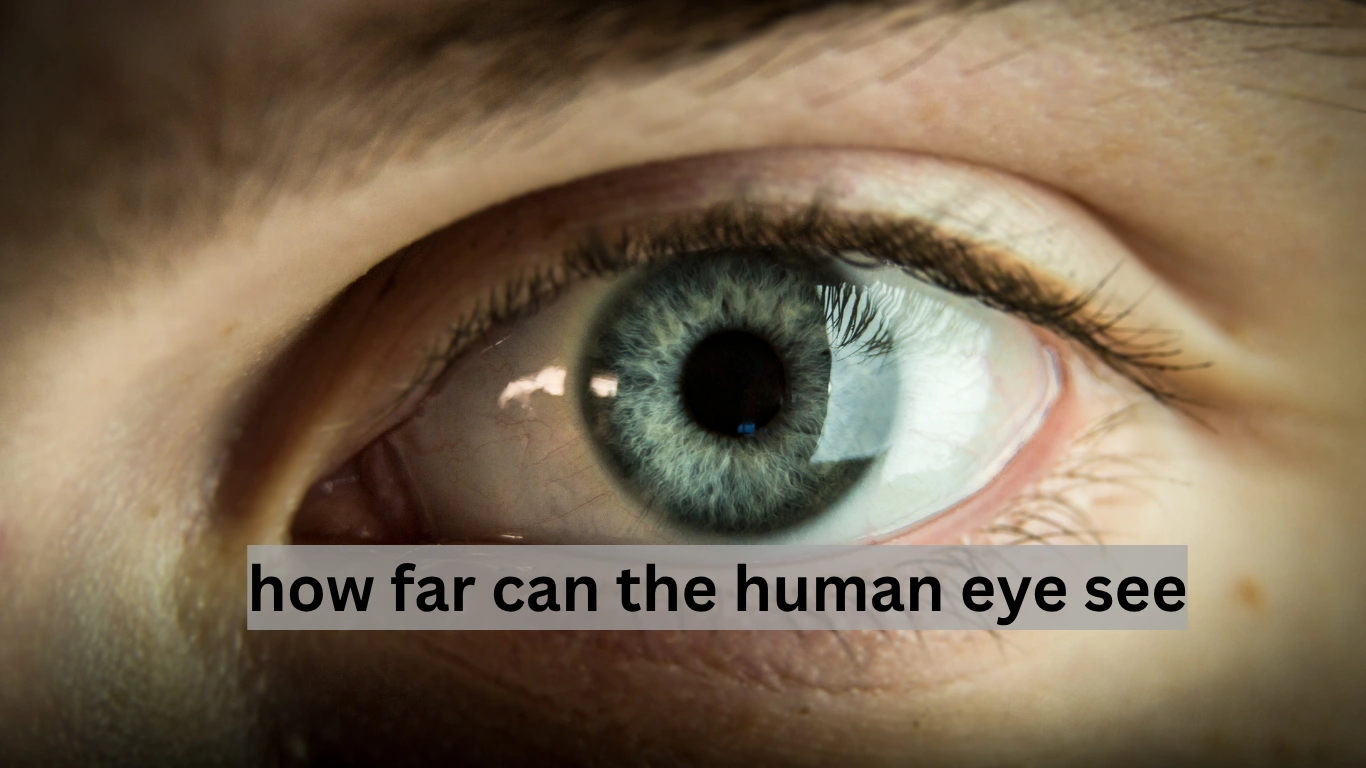Ultimate Guide: How Far Can the Human Eye See
Have you ever stood on a mountain or a beach and wondered, how far can the human eye see? It’s one of those questions that sounds simple but actually has a fascinating scientific answer. The human eye is an incredible tool, designed to capture light, color, movement, and depth. Our ability to see distances varies based on several conditions, and it’s not always what people expect.
The Maximum Distance: When the Earth Gets in the Way
When people ask, Eye distance limit, they often think of objects miles away. If you’re on flat land, your view is limited by the curvature of the Earth. On average, a person standing on level ground can see up to 3 miles (4.8 kilometers) before the ground curves out of sight.
However, if the object is tall, such as a mountain or a skyscraper, the eye can detect it from dozens or even hundreds of miles away under the right conditions. For example, Mount Everest can be seen from more than 200 miles (320 kilometers) away from certain elevated points with clear skies.
Factors That Influence How Far We Can See
The question how far can the human eye see doesn’t have one fixed answer. Several environmental and physical factors affect our range of vision:
- Height of the observer: A person standing on a hill will see farther than one at sea level.
- Air clarity and weather: Dust, fog, and humidity can block or scatter light, reducing how far you can see.
- Light and contrast: The human eye detects contrasts. Objects with high contrast against the background are easier to see from afar.
- Eye health and sharpness: A person with 20/20 vision will see more sharply than someone with poor eyesight.
All of these combine to either extend or shorten the visible range. On a clear day, a person with healthy eyes might see a mountain 50 miles away, but on a foggy day, the same mountain may vanish from sight entirely.
How Far Can the Human Eye See in Space?
When we look up at the night sky, we’re seeing light that has traveled millions or even billions of years to reach us. Stars like Sirius, the brightest star in the sky, are 8.6 light-years away, yet visible to the naked eye.
The farthest object visible to the unaided human eye is the Andromeda Galaxy, located 2.5 million light-years away. That means the light entering your eye tonight left Andromeda when early humans were just learning to use tools.
So when asking human eye visible distance limit, the answer changes dramatically if you’re looking horizontally across Earth or vertically into space.
| Object | Distance from Earth | Visible to Naked Eye? |
|---|---|---|
| Moon | 238,855 miles | Yes |
| Sirius (bright star) | 8.6 light-years | Yes |
| Andromeda Galaxy | 2.5 million light-years | Yes (dark skies) |
That’s the power of our vision: it can reach deep into the cosmic past, simply by looking up.
The Eye’s Resolution: What Size Can We See?

Vision isn’t only about distance; it’s also about resolving power Maximum eye range. The human eye can distinguish details as small as 0.02 degrees apart. This allows us to read small text, track fast movement, and detect tiny shifts in distance.
A practical example is a car headlight. At night, a human can spot the light from a car nearly 30 miles away, but only if the car is facing them and there are no visual obstructions. However, details like the license plate or color wouldn’t be visible until much closer—within a few hundred feet.
Fun fact: If Earth were perfectly flat and there were no atmosphere, a human could see a candle flame from over 30 miles away in total darkness.
Real-Life Examples of Visual Limits
To better understand the limits of our eyes, consider these real-world examples:
- On a beach, looking across the ocean, you can typically see the horizon at around 3 miles.
- From an airplane window, flying at 35,000 feet, you can see a horizon nearly 230 miles away.
- In a dark desert or remote area, where light pollution is low, you can see thousands of stars and even other galaxies.
Why Do Objects Disappear Over Distance?
One key reason objects disappear is not due to poor eyesight, but because of Earth’s curvature and atmospheric scattering. As distance increases:
- Light bends and gets absorbed by particles in the air.
- The bottom part of distant objects becomes hidden first (like the hull of a ship disappearing before the sails).
- Heat waves and pollution can create mirage effects, distorting visibility.
This explains why mountains appear to float on the horizon or seem blurry even when visible.
The Reach of Human Sight:
So, human eye visible distance limit. The answer depends on context. On Earth, we’re usually limited by the horizon—around 3 miles. With a clear view and elevated height, we can spot objects up to 200 miles away. In space, we can see light from galaxies that left their stars millions of years ago. That’s pretty incredible, especially considering the size of the human eyeball is only about 1 inch in diameter. It’s small, but it can reach across the cosmos.
Conclusion:
Understanding how far can the human eye see gives us a deeper appreciation for the wonders of human vision. It’s not just about numbers; it’s about the miracle of perception. Whether you’re gazing at a distant mountaintop or the glow of a distant galaxy, your eyes are your window to an amazing world—both near and unimaginably far.
FAQs:
Can a person see 100 miles away?
Yes, but only if the object is tall enough and visibility is perfect. Mountains and city skylines are examples.
How far can the human eye see on a clear day?
From ground level, about 3 miles. From a high elevation, over 100 miles is possible.
Can we see stars that are millions of light-years away?
Yes. The Andromeda Galaxy, 2.5 million light-years away, is visible to the naked eye in dark skies.
Does wearing glasses improve distance vision?
Absolutely. Glasses correct refractive errors, allowing clearer and sharper long-distance vision.







